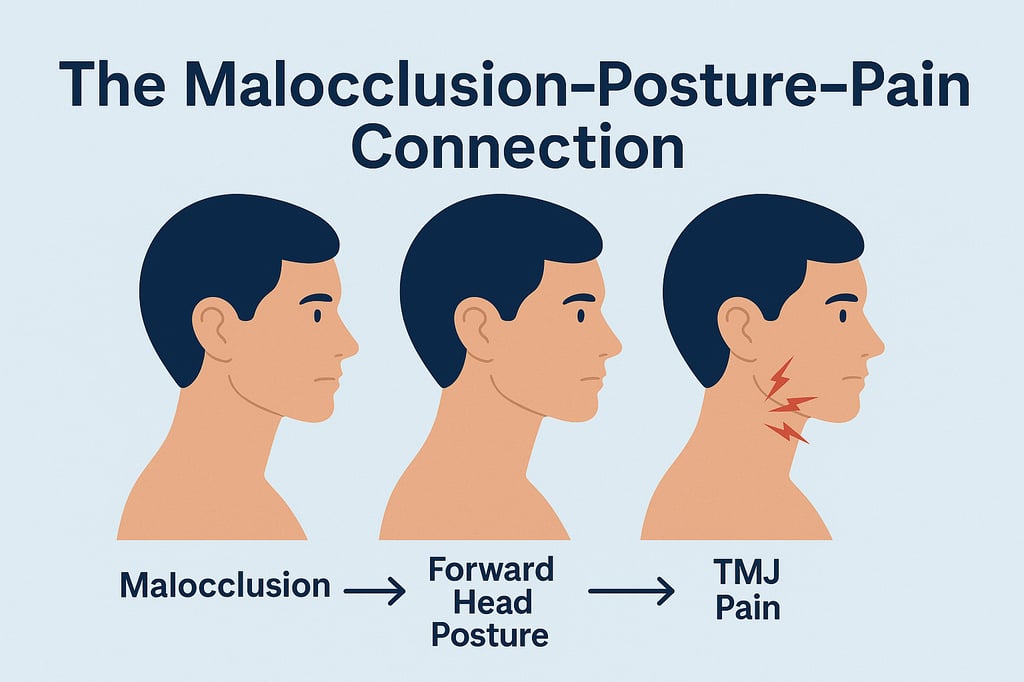The Hidden Connection Between Your Bite, Your Neck, and Chronic TMJ Pain
Which came first?
4/18/20251 min read


Most people don’t realize that their jaw is not just a floating hinge — it’s deeply intertwined with posture, muscle chains, and cranial balance. One of the most overlooked causes of chronic TMJ pain is not just what you’re doing with your jaw, but how your bite — or malocclusion — is affecting the rest of your body. In fact, your jaw position might be setting off a chain reaction all the way down your neck and spine.
When the teeth don’t come together properly, the mandible (lower jaw) has to shift to find a position that “works” — even if it’s dysfunctional. This subtle repositioning might not feel dramatic, but it has massive implications. The head begins to jut forward in compensation, a pattern known as forward head posture (FHP). While FHP is often blamed on tech use or slouching, malocclusion may be one of the root causes.
This forward head position strains the neck muscles, alters the natural curve of the cervical spine, and compresses the temporomandibular joint. Over time, this cascade creates chronic tension in the jaw, base of the skull, and upper shoulders. The result? Clicking, clenching, migraines, neck stiffness — and TMJ pain that won’t go away no matter how many massages you get.
Correcting the bite without addressing posture leads to short-term fixes. And correcting posture without evaluating occlusion is like building a house on a cracked foundation. The solution lies in understanding the full-body relationship between malocclusion, forward head posture, and TMJ dysfunction — and designing treatment plans that account for all three.
At Unlocking-TMJ.com, we don’t just treat symptoms — we decode the structural story behind them. If you’ve been chasing pain relief without success, it may be time to ask: What is your bite telling your body?